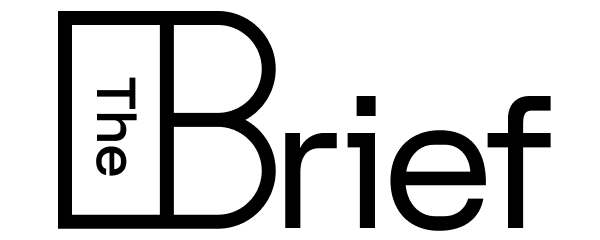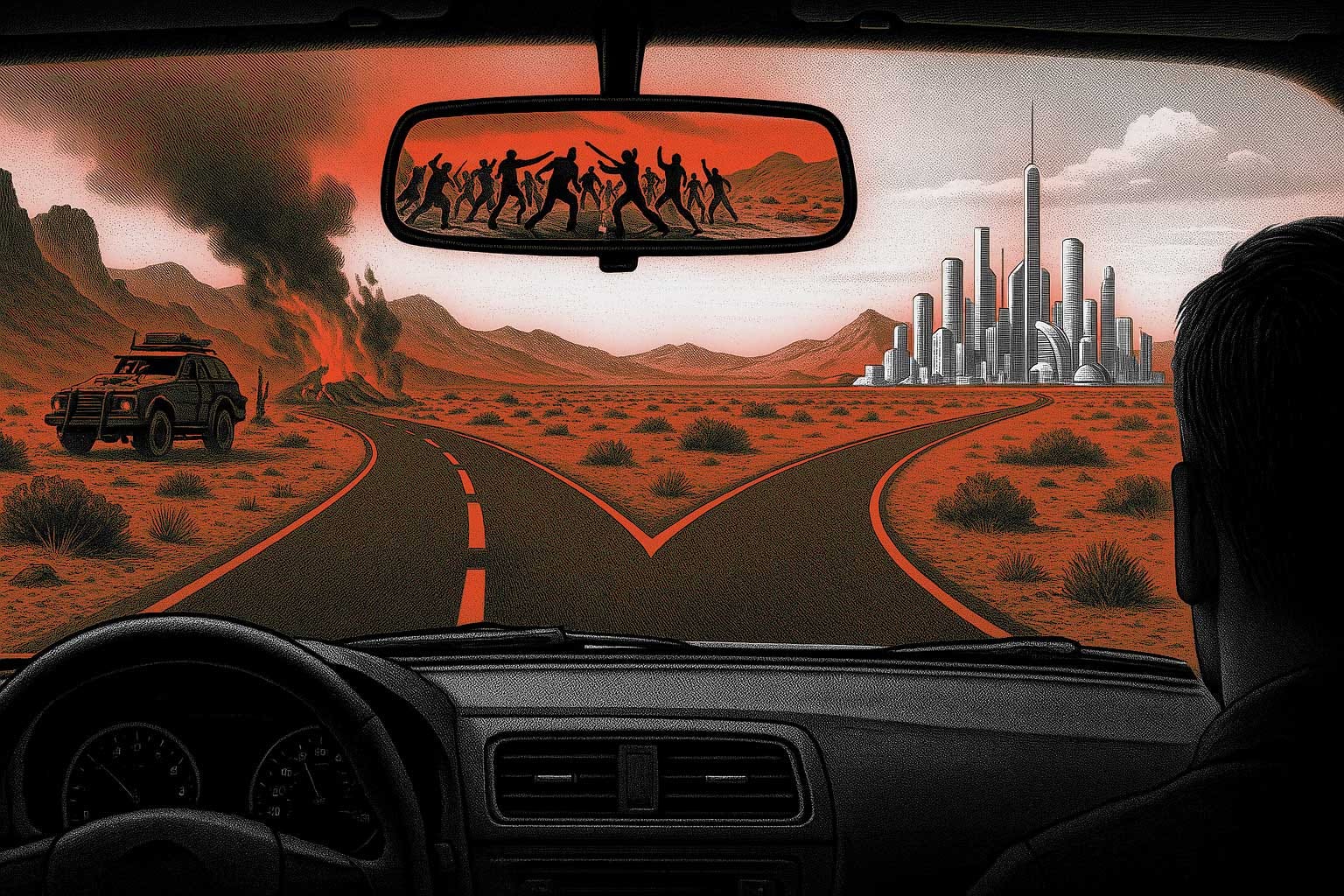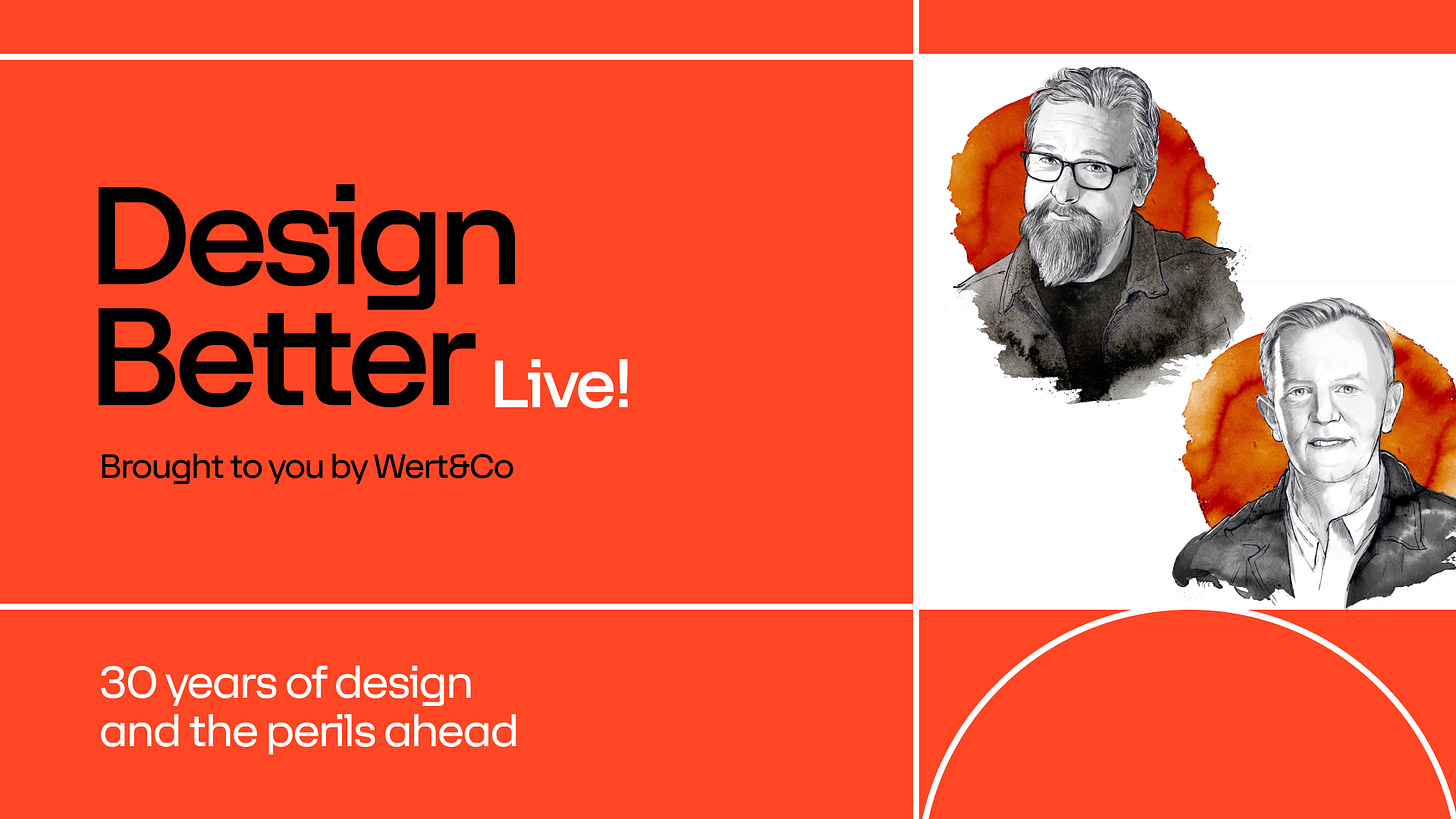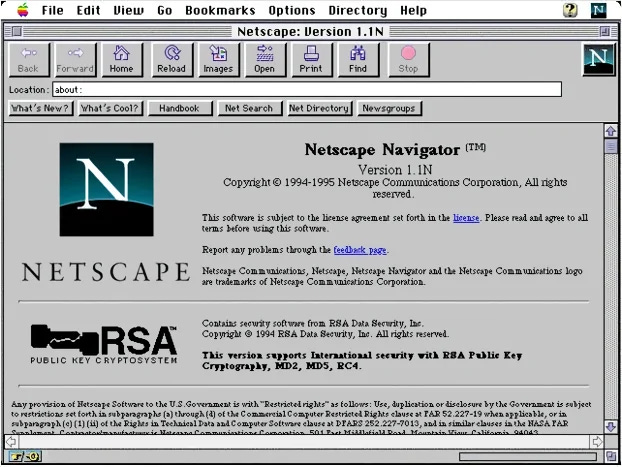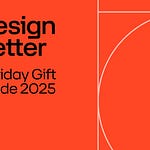In this issue of The Brief, we’re reflecting on what we learned about the past and future of design from our conversation with Paola Antonelli (The Museum of Modern Art), Mark Wilson (Fast Company), Kate Aronowitz (GV), Mike Davidson (Microsoft), and Meaghan Choi (Anthropic).
Looking back at 30 years of design
Wisdom Scales Slower Than Code
Things to watch, read, and explore
Design Better on YouTube
A video version Design Better is now on YouTube! Get a behind the scenes look at our interviews, including our recent live episode in New York celebrating 30 years of Wert&Co, the quiet champions who place the best talent in companies of influence.
Looking back at 30 years of design
by Eli Woolery
Roughly thirty years ago, I was an undergrad, sitting in our dorm’s computer cluster —this was before the days when most students had laptops. I ran into something I hadn’t seen before. It was called Netscape Navigator, and it was one of the first commercial internet browsers (which our very first guest on Design Better, Irene Au, helped design).
I clicked on one of the buttons (probably, “What’s Cool”), and along with a nifty loading animation, the browser took me down some early internet rabbit hole.
I don’t remember where exactly I ended up, but I do remember being blown away by the experience. As a computer nerd kid in the 80’s, I had spent plenty of time with bulletin board systems (BBS’s) and things like America Online, which we could access through a dial-up modem from home.
But this was very different. It was fast—compared to what I was used to—and it felt like I could almost instantaneously access content from all around the world (even though the content online at the time was a miniscule fraction of what it is today).
I had entered school to study product design, but this was for products in the physical world…digital product design didn’t exist as we know it today. The first use of the phrase “User Experience” in a job title was Don Norman’s role a a User Experience Architect at Apple in the mid-90s.
Browsers like Netscape Navigator, and then the introduction of the iPhone in 2007, opened up a new world of opportunities and challenges for the field of design. In our conversation with Paola and Mark, we talked about four: the democratization paradox, design’s loss of innocence, the fragmentation of the design profession, and the shift from tangible to intangible design.
The Democratization Paradox
“We democratized all the tools and we democratized none of the platforms. And that gap is just in a nutshell, kind of what’s broken about the individual’s ability to communicate.”
—Mark Wilson, Fast Company
While design tools and capabilities have been democratized (everyone can now access design software, create content, etc.), the platforms and systems remain highly centralized within a few large companies—Meta, Google, TikTok, etc.
The early, messy days of the internet (Geocities, MySpace) have been largely tamed, which can make for better user experiences, but we also miss the wild creativity that came from having an infinite number of ways to express yourself online. Back then, your personal web page could be a nightmare of animated GIFs, visitor counts, and autoplay music—terrible for usability, but at least it was yours.
Today, we’re all posting in the same formats, and are subjected to the same algorithmic rules for engagement. The tools to create have never been more powerful or accessible, yet we’re increasingly creating within narrower and narrower boundaries defined by a handful of tech giants.
Design’s loss of innocence
“When in 2013 there was the news that of the 3D printed gun, and I remember that my jaw dropped not at the 3D printed gun, but at my stupidity and naivete in having thought that design was such a positive force, always right…design, just like any other human activity can go either way, can be good and it can be bad… it’s important to understand that it’s an application of human creativity, therefore it is subject to those vagaries.”
—Paola Antonelli, MoMA
The ethics of design have become more controversial over the past three decades, from the behavioral design of apps like Instagram and TikTok causing addiction and mental health problems—especially in younger users—to the dark patterns that trick us into subscriptions we don’t want, or sharing data we’d rather keep private.






